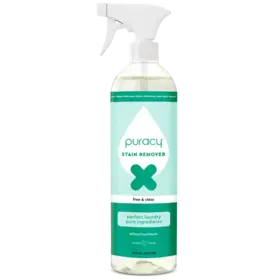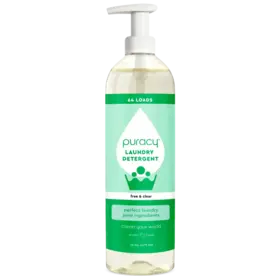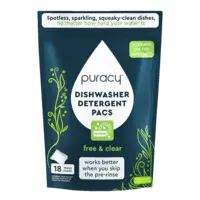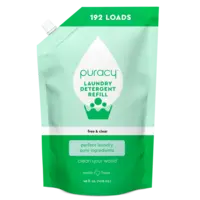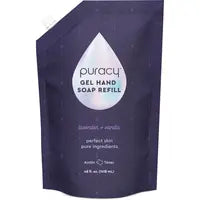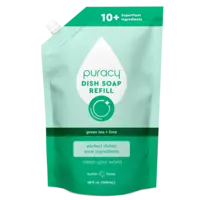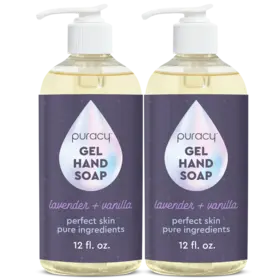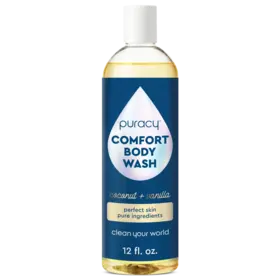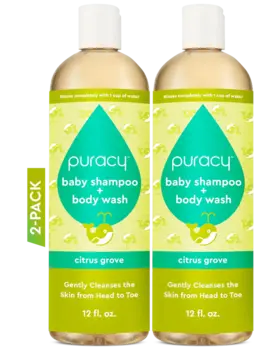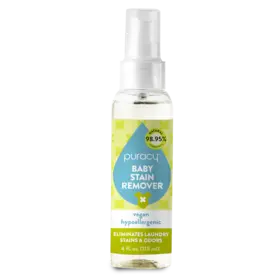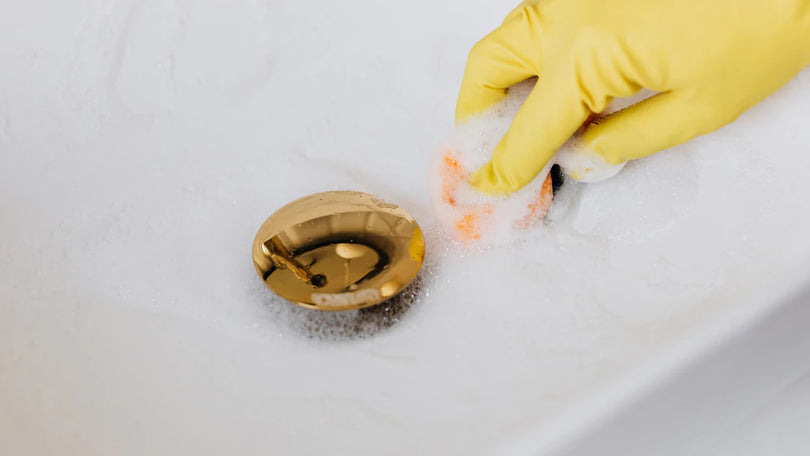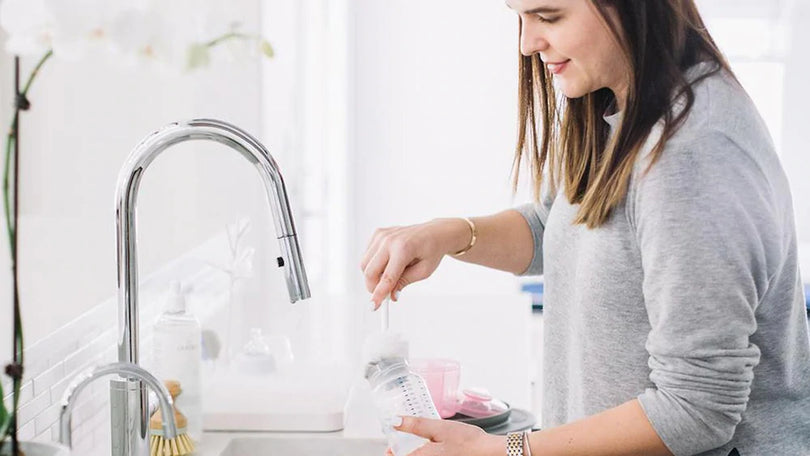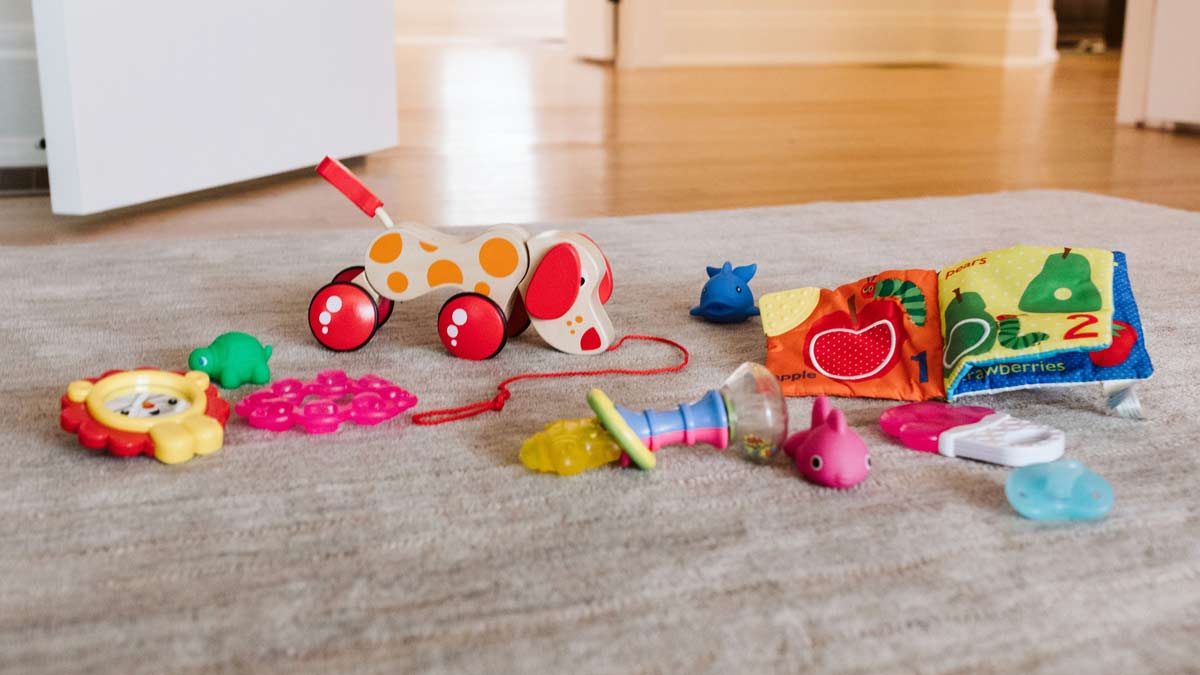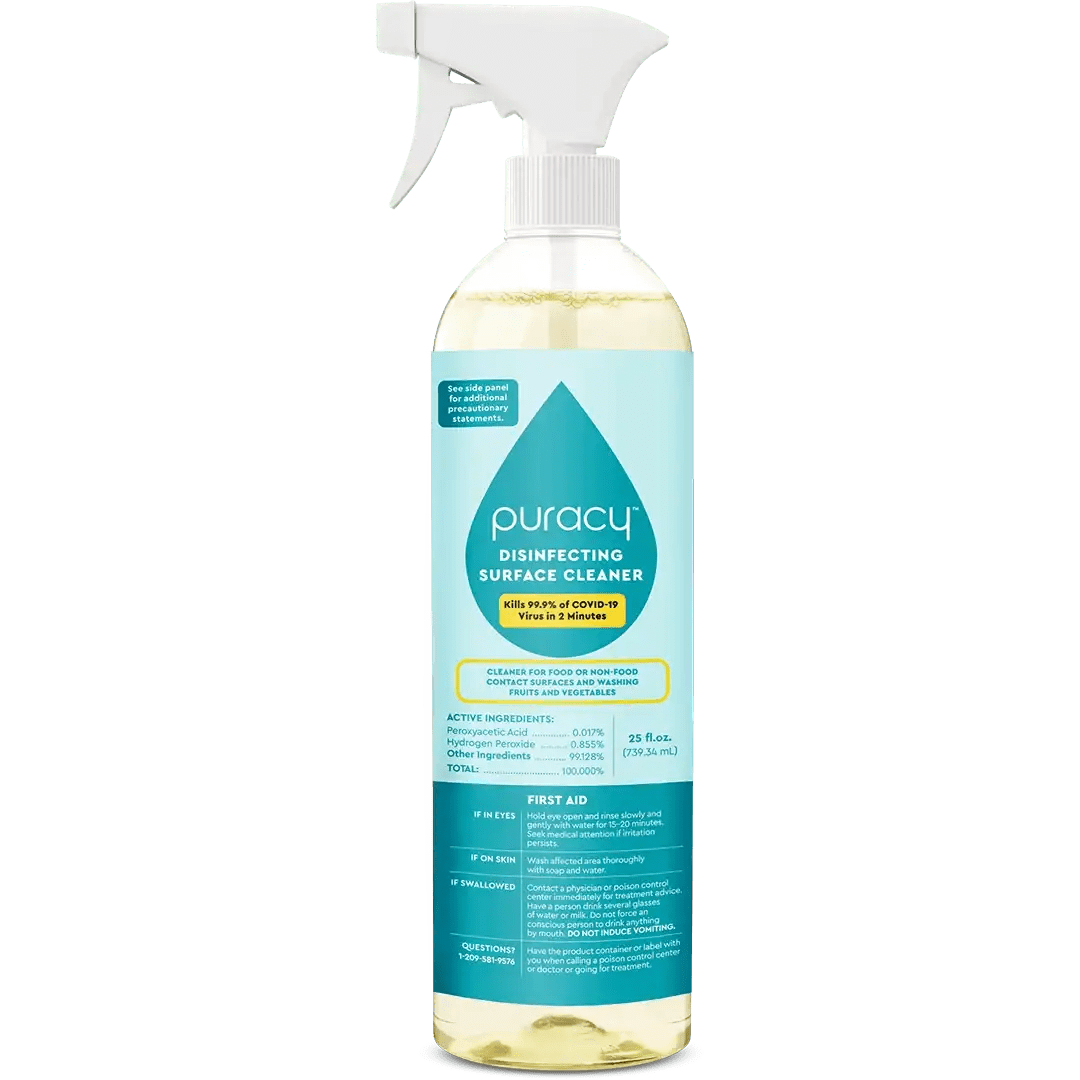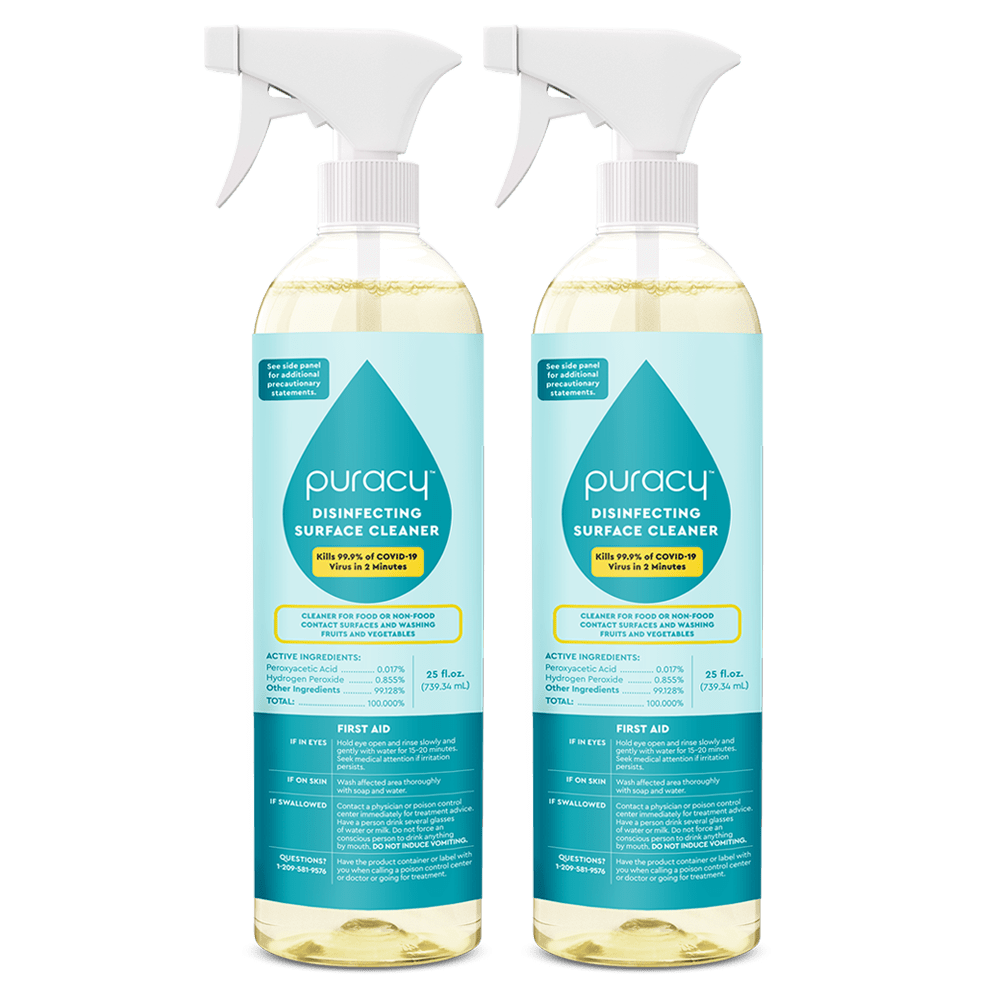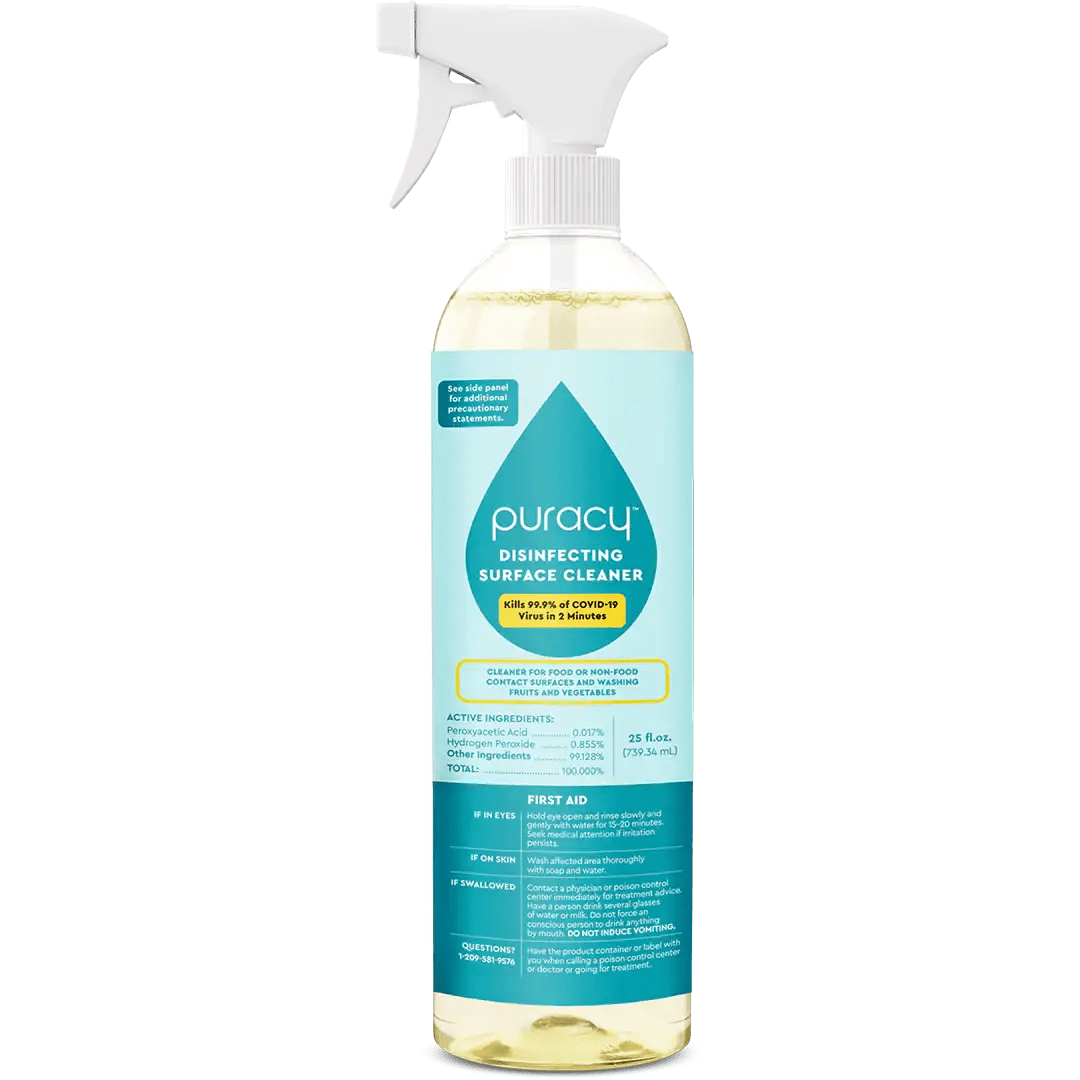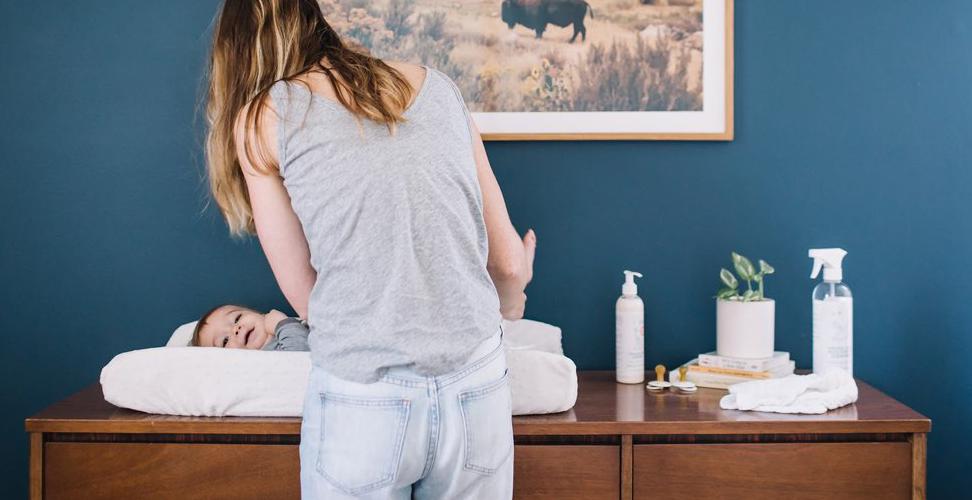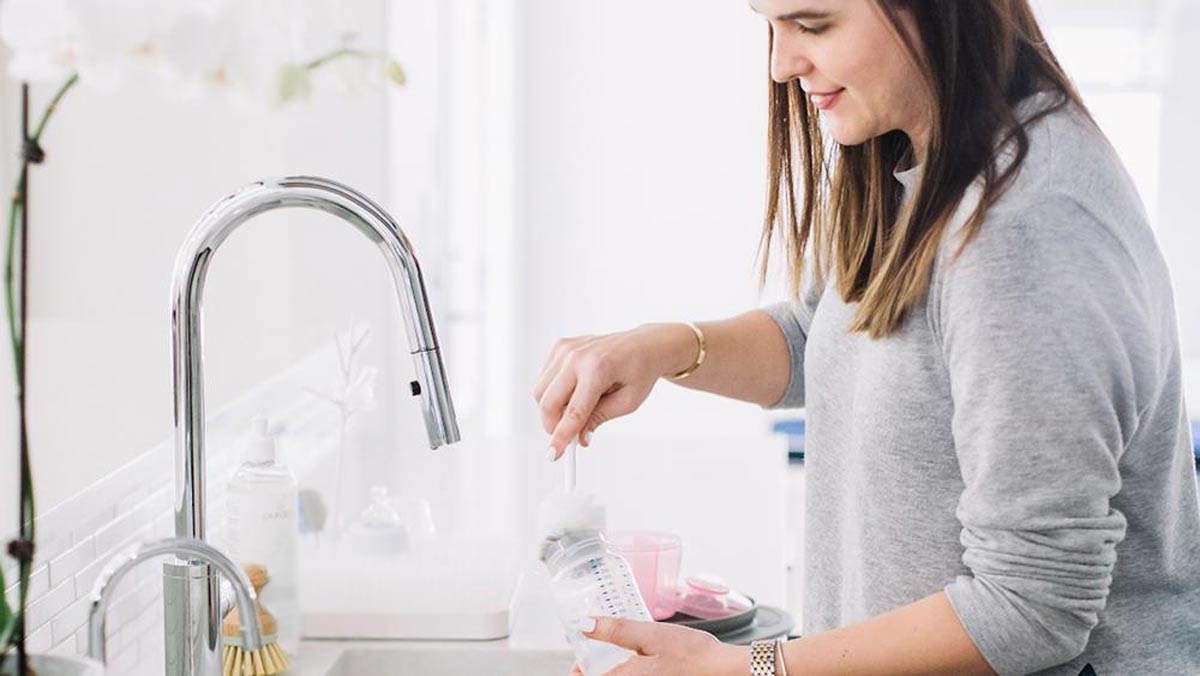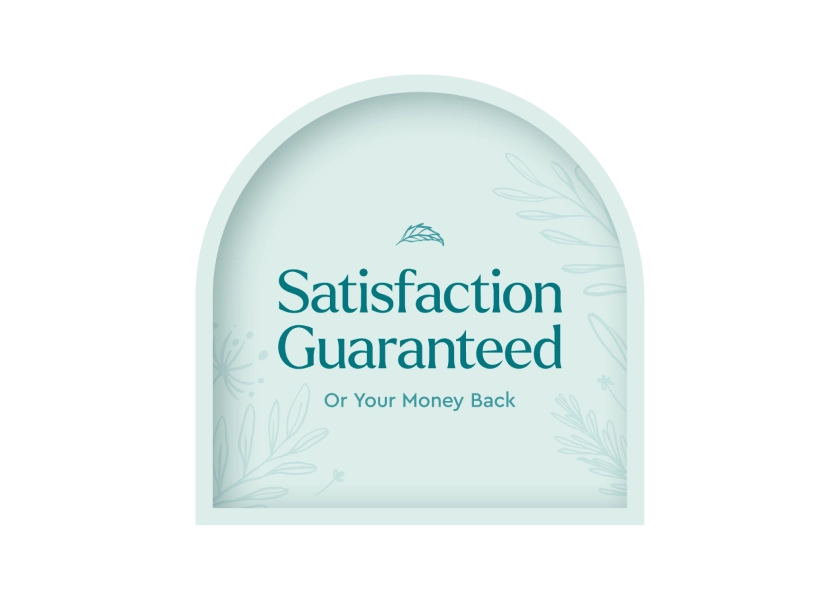What do I clean baby toys with? How do you disinfect them? Our expert tips outline how to clean baby toys naturally and safely.
From stuffed animals to building blocks, play is a massively important element for your baby’s development, almost as important as feeding and sleeping. But any parent knows that after being chewed, thrown on the ground, or kept in the bathtub, playthings harbor plenty of grime, germs, and bacteria.
You can clean baby toys naturally and safely for your babies to use again.
The easiest way to limit the spread of germs is by keeping your baby's hands clean. You can limit washing the toys this way, too! Wash your baby’s hands with a clean washcloth and gentle hand soap before and after eating, crawling outside, or being exposed to a sick child. If your baby (or one of their play dates) has the sniffles, be sure to wash or disinfect baby toys before returning them to the toy bin.
How to Clean Cloth Baby Toys

For stuffed toys and blankies, a trip through the washing machine every 1-2 weeks is ideal. We recommend washing them after long airplane trips or falling on restaurant floors.
Most stuffed animals can be popped directly in the washing machine. Check the label's care instructions and repair any tears/loose ends first: You wouldn't want Teddy to lose an eye (or an arm) in the process! More fragile plush toys can be placed in a mesh garment bag.
How to Clean Plush Baby Toys by Hand

Sometimes, it’s better not to risk throwing a beloved stuffed animal in the washing machine. If that’s the case, you can clean baby toys as follows:
- Dip a clean microfiber towel in a solution of 10-15 drops of Natural Dish Soap and warm water.
- Lightly scrub the toy with a soft toothbrush or an auto detailing brush.
- Continuously rinse the cloth with clear water and wring throughout the process.
- Repeat as necessary.
- Use a hair dryer on a medium setting or place it on a flat, sunny spot to dry.
Pro tip: Slowly run a garment steamer over the entire surface to kill dust mites and other potential allergens.
Can I Put Stuffed Animals in the Dryer?
Placing the toy in the dryer will help to eliminate any lingering germs. However, to avoid the risk of shrinking, you can either use a hair dryer or place it on a flat, indoor surface in direct sunlight.
Pro tip: Pre-treat stains with our Natural Stain Remover at any point. Simply run a warm cycle using a gentle laundry detergent afterwards.
How to Clean Plastic Baby Toys (& Other Hard Surfaces)

If toys have visible dirt, stickiness, and or stains, it’s definitely time to clean them. Plastic, wooden, and bath toys should be washed every week. You can increase that frequency for items dropped on the floor or if they are regularly placed in the mouth.
Mix 10-15 drops of a natural dish soap and hot water in a large bowl. Dip a clean microfiber cloth into this solution and scrub the toys completely. Rinse each with hot water, remove soapy residue, and let them air dry or wipe them down with a clean towel.
Pro tip: Make sure the toy is cleaned for at least 20 seconds in soap to kill germs and bacteria.
How to Clean Dolls

Dolls made with fiber-based material are eco-friendly baby toys that remain a great way to introduce babies to natural materials. They can also be incredibly difficult to clean due to their material which can easily harbor dust and dirt.
In cleaning porous dolls, soak them in a 10:1 mixture of water to vinegar, a diluted combo of water and a few drops of mild dish soap, or a natural multi-purpose cleaner. When you’re done, rinse them thoroughly and throw them in the dryer for a cycle.
How to Wash Baby Toys in the Dishwasher

Before you send toys through the dishwasher cycle, double-check their labels. Some plastic melts and warps when exposed to a combination of hot water and heated drying cycles.
If the product is dishwasher safe, it can likely be run in the top rack during a regular/gentle cleaning setting (not extra hot). Let toys air dry on a designated dish rack.
Pro Tip: Place the toys in the silverware basket or a colander to prevent them from falling.
Cleaning Baby Bath Toys

The rubbery material commonly used in bath toys is prone to mold and other gross build-up. In your bathtub, soak bath toys in a few inches of hot water and dish soap for at least an hour. Scrub with a dish brush, rinse with hot water, and air dry. If they’re dishwasher safe, follow the directions (above) before returning them to the bathroom.
Pro Tip: Clean bath toys every week. This is the perfect opportunity to clean your bathtub, too!
How to Clean Electronic Toys

When cleaning electronic toys, be sure to first disconnect the batteries and replace the cover. We recommend adding 10-15 drops of dish soap to a bowl of hot water. Take a clean microfiber cloth and wring the cloth extremely well to prevent dripping water from getting into the toy’s electronic parts.
To disinfect baby toys, remove the batteries, spray lightly with a hydrogen peroxide disinfectant, and wait 10 minutes. Wipe any remaining liquid and wait for a few hours before reinserting the batteries.
Pro Tip: Use a cotton swab to clean hard-to-reach areas and crevices.
How to Clean Rubber and Silicone Toys

Babies put anything in their mouths and rubber or silicone toys are no different. Their non-porous material make them easy to clean and dry too!
Run the toys in water, then lightly scrub them with a few drops of dish soap. Alternatively, you can use a combination of vinegar and baking soda’s abrasive power to naturally clean the surfaces. Allow the soap to do its work before rinsing thoroughly and drying on the dish rack.
How to Disinfect Baby Toys

Disinfecting baby toys is no rocket science. However, since babies can put toys in their mouths at any given time, it’s difficult not to worry as parents if we’re cleaning the toys enough.
Here’s a step-by-step guide to cleaning regular baby toys on an as needed basis:
- Wipe your baby’s favorite toys with disinfecting wipes before playtime.
- Remove visible dirt on the toy that your baby can ingest.
- If the dirt is deep-seated grime, you can try to spot clean first using regular soap and light brushing.
- If the toy is visibly dirty, slimy, oily or grimy, it’s time to thoroughly clean them according to their care instructions. If the material is porous, you can throw them in the dishwasher or soak them in warm water with a mixture of dish soap and vinegar.
- Allow the toys to dry before putting them back in the toy bin.
Pro tip: Rubber and silicone toys can be cleaned in the dishwasher while electronic toys or toys with batteries should be cleaned with alcohol wipes and a cotton swab.
How Often Should You Clean?

While there’s no hard and fast rule for how often you should clean and wash baby’s toys, disinfect them every other day with alcohol wipes. This should be done especially for the favorite toys or those that are held often and in particular for newborns and infants.
Keep Baby’s Toys Clean with Natural, Plant-Powered Ingredients

Puracy Disinfecting Surface Cleaner was designed for safe use around kids and pets. Not only does our biodegradable formula kill 99.99+% of germs, but it also cleans gunk and grime off of wood, plastic, rubber, and other non-porous materials (and it's safe for food prep surfaces!).
We started Puracy to ensure highly-effective, plant-based cleaning products for the entire family. That's why you won’t find the following ingredients in any of our products:
- Sulfates (e.g. SLS, SLES, SCS)
- Animal byproducts
- Phthalates
- Parabens
- Dyes
- Perfumes & artificial fragrances
- Allergens
- Chlorine
- Bleach

